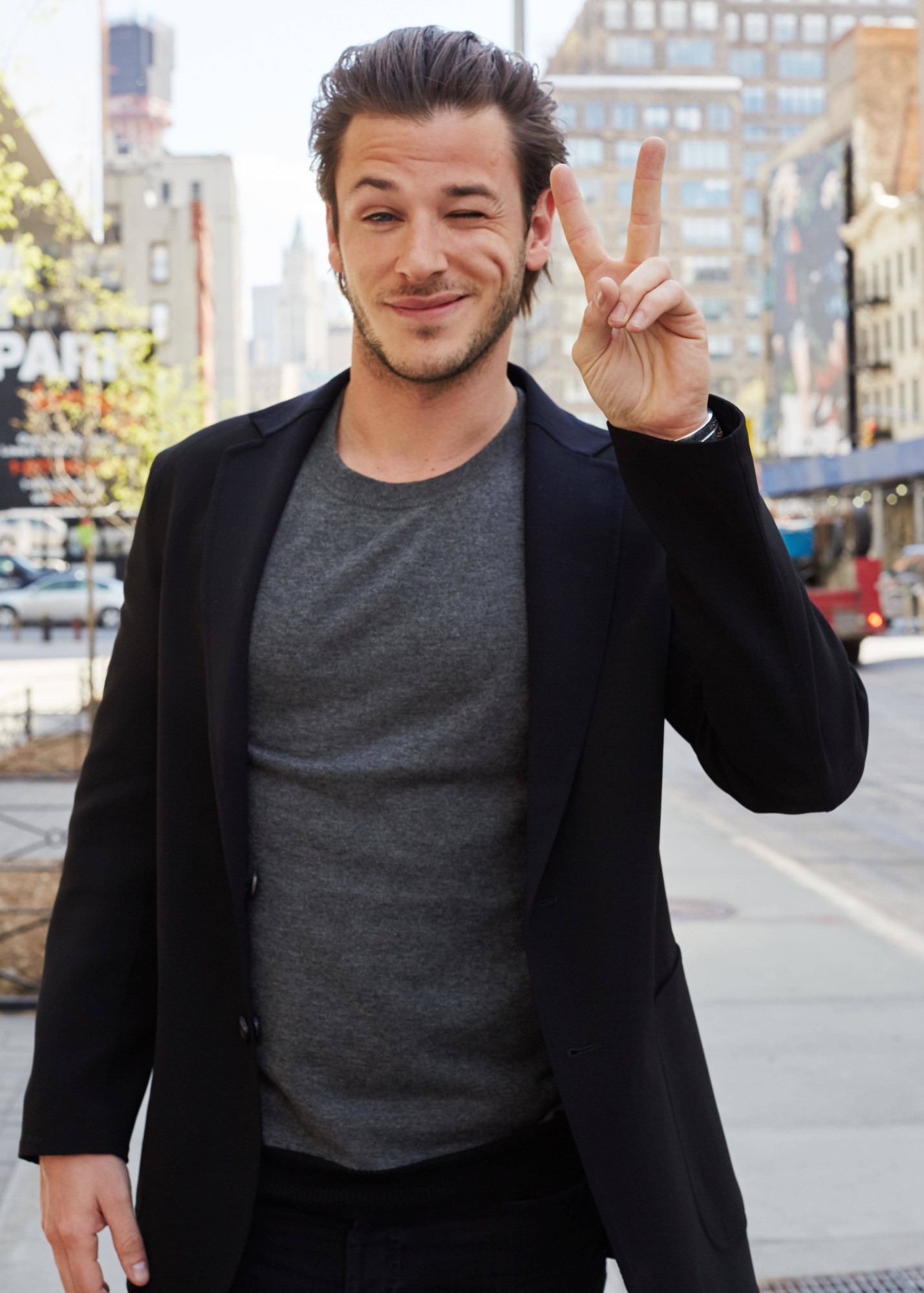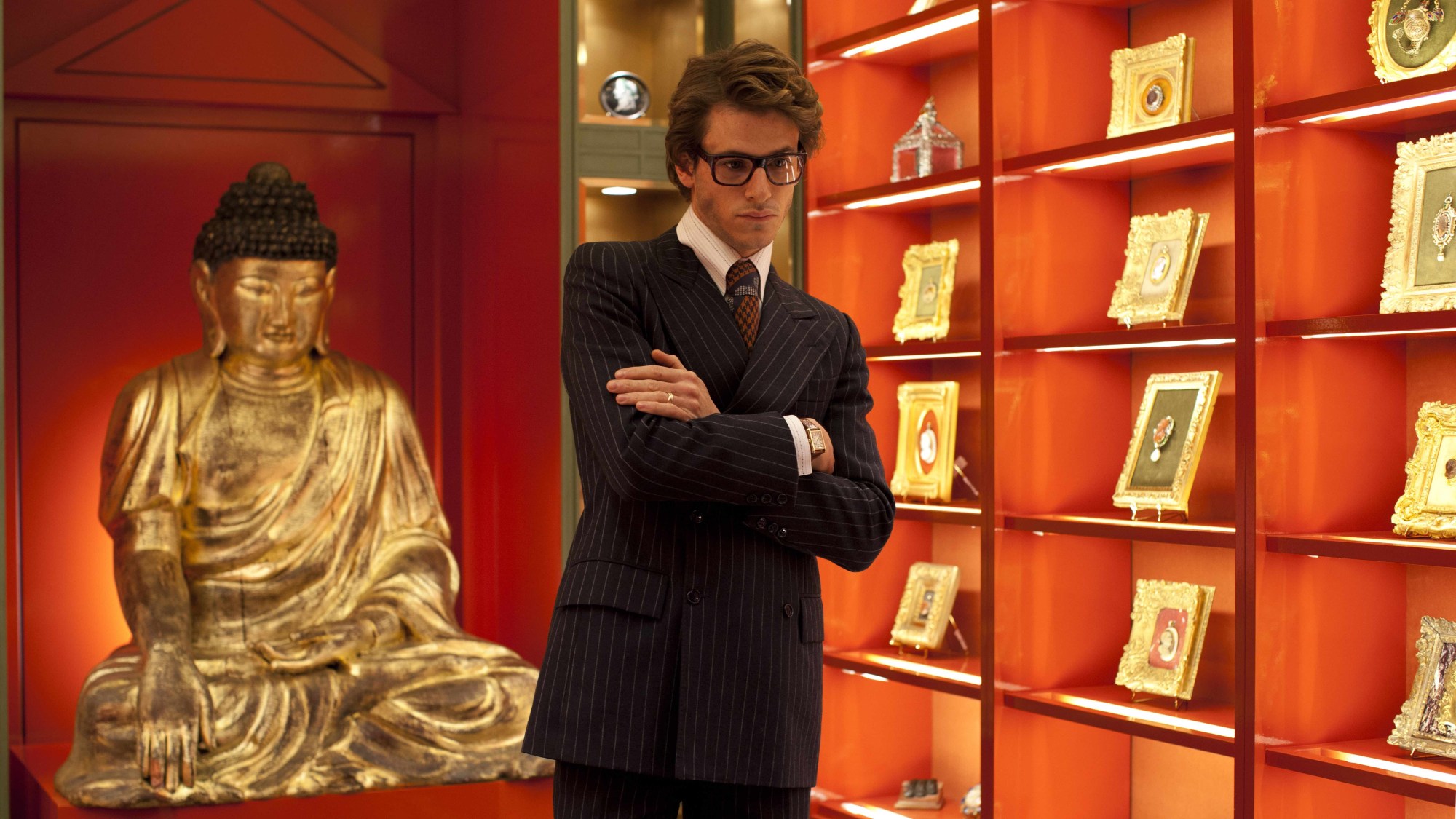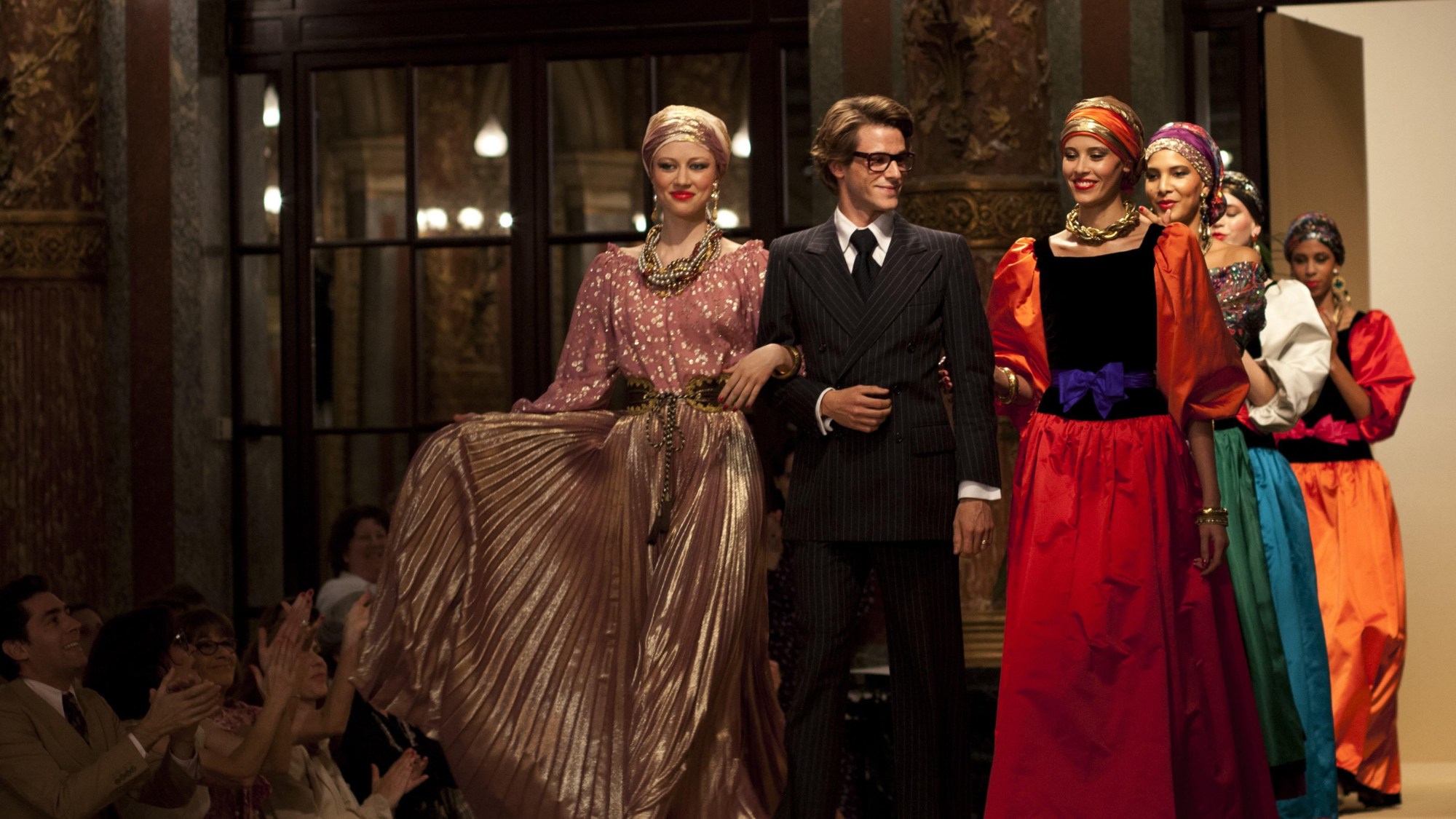There’s a poignant scene in Bertrand Bonello’s unauthorized biopic, Saint Laurent, where journalists at La Libération construct Yves Saint Laurent’s obituary as he fades away in a Paris hospital. They talk over one another and argue about his legacy. “Try to use the word ‘visionary,”’ says one. We mythologize our creative heroes before they’re even dead.
One of the greatest designers that ever lived, as well as a symbol for the (hallucinogenic, economic, sexual) excesses of the 70s, Monsieur Saint Laurent has inspired more than his share of mythology. Dozens of books chronicle his work, and he’s been the subject of three films in the past three years alone. Bonello’s is the most recent to take on the couturier, featuring the alarmingly handsome actor and Chanel model Gaspard Ulliel in the title role. A convincing physical match, Ulliel had already been approached by Gus Van Sant to play Saint Laurent. Van Sant never made his film, but Gaspard slipped into those iconic glasses not long afterward for Bonello. As the film opens in the U.S. this week, Gaspard discusses the unique challenge of playing a notoriously neurotic legend.

Intense preparation for a biopic has become a rite of passage for serious actors, and Gaspard went particularly deep into Yves as a year passed between being cast and the first day of shooting. Without much video to draw from, books became important, especially Alicia Drake’s excellent The Beautiful Fall, which concentrates on the rivalry between Yves and Karl Lagerfeld.
He lost 30 pounds to achieve the superskinny 70s shape that worked with the designer’s elegant dandy wardrobe. “Somehow it helped incarnate this character and maybe uncover the grace and flexibility he had,” says Gaspard.
The actor worked deliberately to capture Yves’ feminine, high-strung voice. He describes the process: “It was more about listening to it as much as I could, to many different recordings so that my ear would absorb those sounds, and so that it would just come out on day one in the most spontaneous, natural, organic way.” The fragility of that voice makes lines like “I created a monster, and now I have to live with it,” all the more chilling.
He almost did too much research. “All of a sudden I felt stuck and kind of buried under all those details and information,” he says. “And that’s when I realized I had to change direction, actually step back from reality to clear some space within which I could fantasize about this character and actually reinvent my own version of Saint Laurent. In the end, the biggest part of my work, prior to the shooting, was actually to seek into my my own memories, my own life, my own emotions, in order to inject this in my portrayal so that it would feel real and truthful.”
That portrayal hinges greatly on Yves’ relationships with his friends and lovers. Léa Seydoux is underused as a totally charming Loulou de la Falaise, Aymeline Valade is stunning and quiet in the role of Betty Catroux, and Jérémie Renier plays Yves’ business and life partner Pierre Bergé, but it is Louis Garrel who steals every scene as his druggie gadabout boyfriend (and Lagerfeld boytoy) Jacques de Bascher.

The scenes where Yves and Jacques fall into a destructive love affair make for some pretty exciting cinema: there’s full frontal nudity, bondage, orgies, opium, cocaine, violence, and (spoiler alert) a puppy who overdoses. “For me those seemingly dark and hedonistic scenes full of debauchery and reckless abandon are in fact the moments where Yves is actually reaching for light and the full experience of living,” says Gaspard. “Versus those atelier scenes, where it’s more like an emotional prison to him, being constantly infantilized and watched. The dialectic between those night scenes and day scenes are very interesting in the way I approached the character.”

That’s the crux of the Saint Laurent legend: he would spend his nights cavorting in Marrakesh or cruising Paris parks, only to wake up and sketch game-changing collections or go antique shopping with Pierre. Yves and Pierre’s obsession with art and objects adds an interesting aesthetic dimension to the film. Mirrors, statues, paintings, and vases are all featured prominently. It’s no accident that Yves tries to kill Pierre with a stone bust. In one insistent sequence, a Mondrian painting dissolves into segmented squares of different mini-films. Gaspard notes: “It’s a perfect assertion that in a way, art or creative life only exists in constant dialogue with other forms of art.”
So, go see this film if you love fashion (it captures YSL designs magnificently and won a César for costume design). But go see it if you don’t particularly like fashion, too. As Gaspard says, “It goes beyond just the simple classic biopic, you know? It’s more a film about artistic creative life. It’s an odyssey into the mind of a tortured creative artist, and so it’s much more interesting.”
Credits
Text Rory Satran
Stills courtesy Sony Pictures Classics
Portrait Kathy Lo
